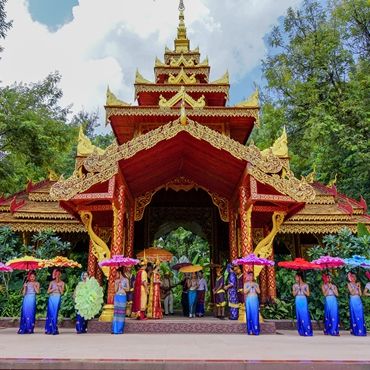Pingyao Travel Guide & Tours
Pingyao ancient city is the outstanding example of Chinese Han nationality cities during Ming and Qing Dynasties, remaining all features of such periods. Pingyao ancient city reveals a picture of unexpected cultural, social, economic and religious development in Chinese history.
---World Relics Committee of UNESCO
As a famous historic cultural city and a world cultural heritage site in China, Pingyao is the best-preserved ancient town among the four ancient towns (Langzhong in Sichuan, Lijiang in Yunnan and She County in Anhui) in China. Lots of folk houses in north China built in the Ming and Qing dynasties stand in well-preserved conditions in this ancient town. Piao Hao, a firm for exchange and transfer of money, was the earliest bank in China and was born here. During the long-run period of late 19th and early 20th centuries, merchants form Shanxi Province nearly dominated all finance in China. While playing an outstanding role in business and finance circles, they painstakingly built the eye-catching courtyards one after another, and then gradually came into being the typical house culture of Shanxi. On Dec. 3, 1997, this well-preserved ancient town was on the list of World Heritage formally.

Pingyao is also called the Turtle City, the symbol of longevity and solidity. There are 3000 crenels and 72 ramparts in the outer wall. The number 3000 stands for Confucian’s 3000 followers while the number 72 means the 72 worthies. Before Qin and Han dynasties, Pingyao was called the Ancient Tao. In light of the Records of Pingyao County, Pingyao had been the manor of Yao, who was the great king of a union tribe in ancient China. In the Spring and Autumn Period, the Ancient Tao belonged to the Jin Kingdo and then to the Zhao Kingdom. When the First Emperor of Qin unified the whole country, the manor system was replaced by the county system. Then the Ancient Tao was set as the county location and changed its name to Pingtao. In the early Northern Wei Dynasty, Pingtao was replaced by Pingyao to avoid the pronunciation Tao, because the temporal emperor was called Tuoba Tao. According to ancient laws and rules, name of emperor, high official, head of a family, or elder of a clan was considered as taboo by his subjects or juniors.

In terms of some historical records, the King of Xuan of the West Zhou Dynasty dispatched his general Yin Jiefu to fight against invaders of other nationalities. General Yin stationed his troops in the Ancient Tao and built defense wall there. Since the year of 1370 AD in the early Ming Dynasty, the government had enlarged the rebuilt the city wall to present size for military purpose. In the late 500 years of Ming & Qing Dynasty, the wall had been reconstructed and repaired for 26 times or so, with its basic style and size remained without many changes. From then on, the magnificent wall has been standing there for 600 years through the war flames and natural corrosions. Swords, spears, flames and explosions of war had gone as transient and ephemeral as a fleeting cloud. Besides, military function of the magnificent city wall has also died out. Nowadays, this old wall presents the changing dynasties and events that occurred in the past thousand years to the later generations. The most popular attractions in Pingyao are Ancient City Walls and Gates of Pingyao, Rishengchang Draft Bank, Streets and Markets of Pingyao, Wang’s Grand Courtyard and Pingyao County Office.













